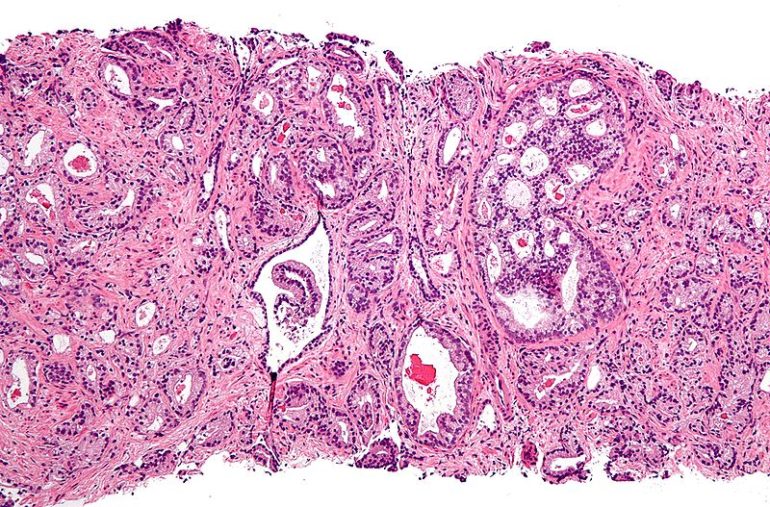One of the most challenging issues in cancer therapy is the development of drug resistance and subsequent disease progression. In a new article featured on this month’s cover of Cancer Research, Moffitt Cancer Center researchers, in collaboration with Oxford University, report results from their study using mathematical modeling to show that cell turnover impacts drug resistance and is an important factor that governs the success of adaptive therapy.
Cancer treatment options have increased substantially over the past few decades; however, many patients eventually develop drug resistance. Physicians strive to overcome resistance by either trying to target cancer cells through an alternative approach or targeting the resistance mechanism itself, but success with these approaches is often limited, as additional resistance mechanisms can arise.
Researchers in Moffitt’s Integrated Mathematical Oncology Department and Center of Excellence for Evolutionary Therapy believe that resistance may partly develop because of the high doses of drugs that are commonly used during treatment. Patients are typically administered a maximum tolerated dose of therapy that kills as many cancer cells as possible with the fewest side effects. However, according to evolutionary theories, this maximum tolerated dose approach could lead to drug resistance because of the existence of drug resistant cells before treatment even begins. Once sensitive cells are killed by anti-cancer therapies, these drug resistant cells are given free rein to divide and multiply. Moffitt researchers believe an alternative treatment strategy called adaptive therapy may be a better approach to kill cancer cells and minimize the development of drug resistance.
“Adaptive therapy aims not to eradicate the tumor, but to control it. Therapy is applied to reduce tumor burden to a tolerable level but is subsequently modulated or withdrawn to maintain a pool of drug-sensitive cancer cells,” said Alexander Anderson, Ph.D., chair of the Integrated Mathematical Oncology Department and founding director of the Center of Excellence for Evolutionary Therapy.
Previous laboratory studies have shown that adaptive therapy can prolong the time to cancer progression for several different tumor types, including ovarian, breast and melanoma. Additionally, a clinical trial in prostate cancer patients at Moffitt has shown that compared to standard treatment, adaptive therapy increased the time to cancer progression by approximately 10 months and reduced the cumulative drug usage by 53%.
Despite these encouraging results, it is unclear which tumor types will respond best to adaptive therapy in the clinic. Recent studies have shown that the success of adaptive therapy is dependent on different factors, including levels of spatial constraint, the fitness of the resistant cell population, the initial number of resistant cells and the mechanisms of resistance. However, it is unclear how the cost of resistance factors into a tumor’s response to adaptive therapy.
The cost of resistance refers to the idea that cells that become resistant have a fitness advantage over non-resistant cells when a drug is present, but this may come at a cost, such as a slower growth rate. However, drug resistance is not always associated with a cost and it is unclear whether a cost of resistance is necessary for the success of adaptive therapy.
The research team at Moffitt used mathematical modeling to determine how the cost of resistance is associated with adaptive therapy. They modeled the growth of drug sensitive and resistant cell populations under both continuous therapy and adaptive therapy conditions and compared their time to disease progression in the presence and absence of a cost of resistance.
The researchers showed that tumors with higher cell density and those with smaller levels of pre-existing resistance did better under adaptive therapy conditions. They also showed that cell turnover is a key factor that impacts the cost of resistance and outcomes to adaptive therapy by increasing competition between sensitive and resistance cells. To do so, they made use of phase plane techniques, which provide a visual way to dissect the dynamics of mathematical models.
“I’m a very visual person and find that phase planes make it easy to gain an intuition for a model. You don’t need to manipulate equations, which makes them great for communicating with experimental and clinical collaborators. We are honored that Cancer Research selected our collage of phase planes for their cover and hope this will help making mathematical oncology accessible to more people,” said Maximilian Strobl, lead study author and doctoral candidate at University of Oxford.
To confirm their models, the researchers analyzed data from 67 prostate cancer patients undergoing intermittent therapy treatment, a predecessor of adaptive therapy.
“We find that even though our model was constructed as a conceptual tool, it can recapitulate individual patient dynamics for a majority of patients, and that it can describe patients who continuously respond, as well as those who eventually relapse,” said Anderson.
While more studies are needed to understand how adaptive therapies may benefit patients, researchers are hopeful their data will lead to better indicators of which tumors will respond to adaptive therapy.
“With better understanding of tumor growth, resistance costs, and turnover rates, adaptive therapy can be more carefully tailored to patients who stand to benefit from it the most and, more importantly, highlight which patients may benefit from multi-drug approaches,” said Anderson.
Mathematical model predicts patient outcomes to adaptive therapy
More information:
Maximilian A.R. Strobl et al, Turnover Modulates the Need for a Cost of Resistance in Adaptive Therapy, Cancer Research (2020). DOI: 10.1158/0008-5472.CAN-20-0806
Provided by
H. Lee Moffitt Cancer Center & Research Institute
Citation:
Researchers use mathematical modeling to identify factors that determine adaptive therapy success (2021, February 16)
retrieved 16 February 2021
from https://medicalxpress.com/news/2021-02-mathematical-factors-therapy-success.html
This document is subject to copyright. Apart from any fair dealing for the purpose of private study or research, no
part may be reproduced without the written permission. The content is provided for information purposes only.



